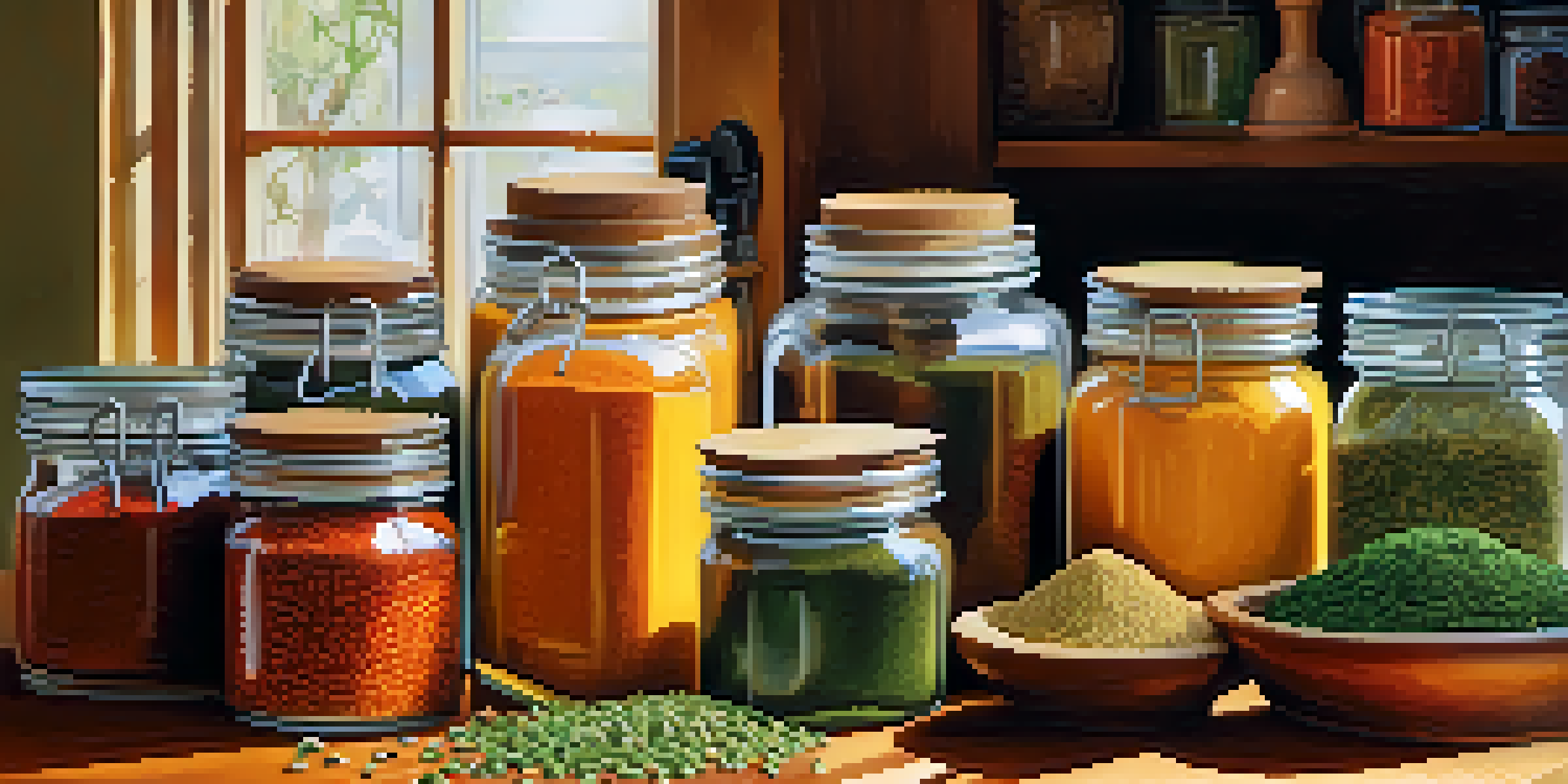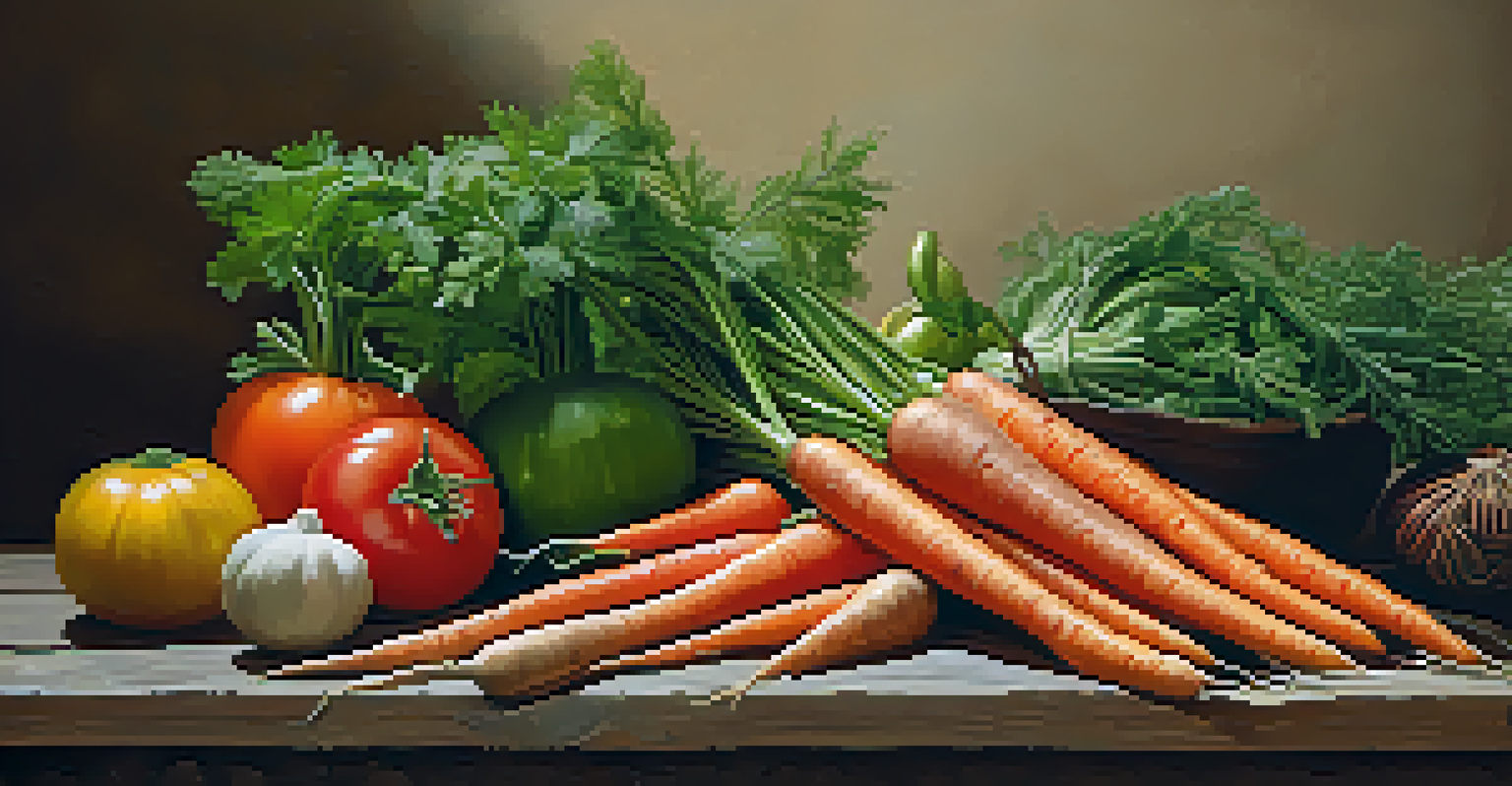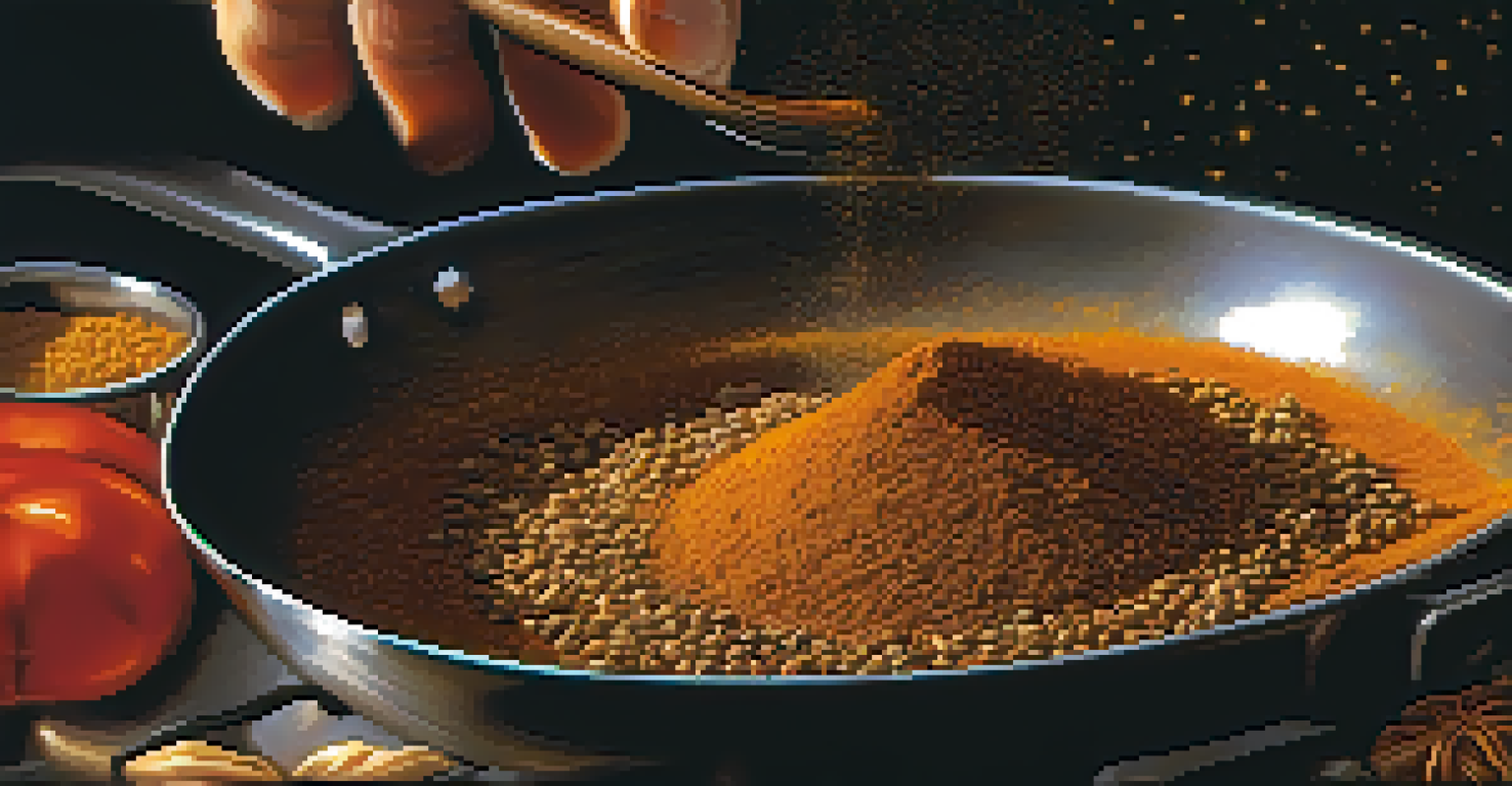Spices: The Secret Ingredient in Flavorful Vegetarian Meals

The Role of Spices in Vegetarian Cooking
Spices are the unsung heroes of vegetarian cooking, adding depth and complexity to dishes that might otherwise feel bland. They are not just about heat; they bring a symphony of flavors that can elevate simple ingredients into culinary masterpieces. Consider how a pinch of cumin can turn a basic vegetable soup into an aromatic experience that dances on your palate.
Spices are the variety of life.
In vegetarian meals, spices help create layers of flavor that appeal to diverse taste buds. Unlike meat-based dishes, which often come with their own robust flavors, vegetarian options rely heavily on spices to compensate for the milder taste of vegetables. This necessity makes mastering spices an essential skill for anyone looking to enhance their vegetarian cooking.
Moreover, spices provide a treasure trove of health benefits, from anti-inflammatory properties to antioxidants. Incorporating a variety of spices not only enhances taste but also contributes to a nutritious diet. So, the next time you’re preparing a meatless meal, remember that spices are your best allies in the kitchen.
Common Spices for Flavorful Vegetarian Meals
Some spices have become staples in vegetarian cooking due to their versatility and flavor profiles. For instance, turmeric is not only known for its vibrant color but also for its earthy and slightly bitter taste, making it perfect for curries and rice dishes. Similarly, paprika can add a sweet smokiness to everything from stews to roasted vegetables.

Cumin, with its warm and nutty flavor, is another powerhouse that pairs well with legumes and grains. It’s commonly used in cuisines worldwide, making it a great addition to any pantry. If you’re looking to spice things up, consider using garam masala, a blend of spices that can transform a simple lentil dish into something exotic and memorable.
Spices Enhance Vegetarian Dishes
Spices add depth and complexity to vegetarian meals, transforming simple ingredients into flavorful culinary experiences.
Don’t forget about fresh herbs like cilantro and basil, which can also play a crucial role in adding brightness and freshness to your meals. These herbs, when combined with spices, create a flavor explosion that can make even the simplest dishes shine. Experimenting with different combinations can lead to delightful discoveries.
How to Properly Use Spices in Your Cooking
Using spices effectively requires a bit of knowledge and practice. It’s essential to consider when to add spices during the cooking process; some spices, like garlic and onion, benefit from sautéing first to release their full flavor. In contrast, spices like bay leaves and cinnamon sticks are best added early in the cooking process to infuse their essence into the dish.
Cooking is like love. It should be entered into with abandon or not at all.
Another important tip is to toast your spices before using them. This simple step can unlock a new level of flavor, making your dishes even more aromatic and inviting. Just a minute or two in a dry skillet can transform the spices, enhancing their natural oils and intensifying their taste.
Lastly, always taste as you go! Spices can vary in potency, so it’s crucial to adjust quantities based on your personal preference and the specific dish. A little experimentation will help you find the perfect balance, ensuring your vegetarian meals are not only flavorful but also uniquely yours.
Regional Spice Blends to Explore
Diving into regional spice blends can add an exciting twist to your vegetarian meals. Take za'atar, a Middle Eastern blend of thyme, sesame seeds, and sumac, which can be sprinkled on roasted vegetables or mixed into dips. Each region has its unique blend that tells a story through flavor, making cooking a journey around the world.
Another notable blend is berbere, an Ethiopian spice mix that combines chili peppers, garlic, ginger, and various spices. It’s perfect for adding a kick to stews and lentil dishes, giving your meals a rich, complex flavor profile. Exploring these blends can inspire you to create dishes that are not only delicious but also culturally rich.
Explore Regional Spice Blends
Incorporating regional spice blends like za'atar and berbere can enrich your cooking, offering unique flavors and cultural experiences.
Don’t shy away from trying Moroccan ras el hanout, a fragrant mix that can elevate a vegetable tagine. Each blend brings a unique essence that transforms familiar ingredients into something extraordinary. By incorporating these regional spices, you can celebrate global cuisines right from your kitchen.
Spices and Seasonal Cooking
Cooking with the seasons is a beautiful way to connect your meals with nature. Using spices that complement seasonal produce can enhance flavors and make your dishes more vibrant. For instance, pairing fresh spring vegetables with dill or tarragon can bring out their natural sweetness and brightness.
In the fall, warming spices like cinnamon and nutmeg can make root vegetables and squashes taste even more comforting. Think about how a sprinkle of cinnamon on roasted sweet potatoes can take them to the next level, creating a dish that feels both hearty and satisfying.
As the seasons change, so should your spice choices. Embracing seasonal cooking not only supports local farmers but also allows you to enjoy the freshest flavors available. This approach keeps your meals exciting and varied throughout the year.
Spice Storage Tips for Maximum Freshness
Proper spice storage is key to maintaining flavor and potency. Store spices in airtight containers, away from light, heat, and moisture to prevent them from losing their vibrancy. Glass jars or dark-colored containers work well, as they protect spices from light exposure.
Another important tip is to regularly check the freshness of your spices. Ground spices typically have a shelf life of about six months to a year, while whole spices can last much longer. If you notice a decline in aroma or flavor, it may be time to replenish your spice collection.
Proper Spice Storage is Essential
Storing spices correctly in airtight containers helps maintain their freshness and potency, ensuring maximum flavor in your cooking.
Consider labeling your containers with the purchase date to help keep track of freshness. This small step can save you from using stale spices that don’t contribute much to your dishes. With proper care, your spices can continue to inspire delicious meals.
Final Thoughts: Embrace Spice in Your Cooking
Embracing spices in your vegetarian cooking can open up a world of flavor possibilities. They are more than just seasonings; they are the key to transforming simple ingredients into memorable meals. Every pinch and sprinkle tells a story, adding character and warmth to your dishes.
As you experiment with different spices and blends, remember to trust your taste buds. Cooking should be a joyful exploration, allowing you to discover what works best for you. Don’t hesitate to mix and match; the kitchen is your playground.

So, gather your spices, unleash your creativity, and let the vibrant world of flavors inspire your next vegetarian meal. With the right spices, you can create delicious dishes that make every meal a celebration of taste.